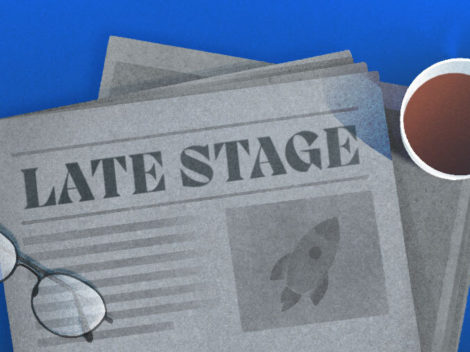When CEO David Rosenberg wanted to take AeroFarms public, he considered a traditional IPO, but soon decided that a merger with a special purpose acquisition company provided a better path to the public markets for his startup, which grows crops in vertical indoor farms.
Subscribe to the Crunchbase Daily
He soon found a match with Spring Valley Acquisition Corp., a $232 million SPAC that went public last November and was looking for a business in the sustainability sector to acquire. In March, the companies announced that AeroFarms would go public via a merger with Spring Valley in a deal valued at $1.2 billion.
The merger is among a growing number of agricultural and food-related technology startups that are choosing SPACs, also known as blank-check companies, as their path to the public markets.
Expect to see between four and seven more agriculture technology SPACs this year, according to Sanjeev Krishnan, managing director of S2G Ventures, a Chicago-based venture firm that invests in food and agriculture startups.
Rosenberg said that for AeroFarms, everything about the Spring Valley deal made sense. “We were ready for the public market from the standpoint of our processes, procedures, leadership and communication, which is best in class,” he told Crunchbase News. “We were ready to take in that extra element of professionalism. Spring Valley had the playbook of all of the things it took to go from private to public, and this is my first time as a public company CEO, and I wanted to have someone with a strong playbook to follow.”
Newark, New Jersey-based AeroFarms, founded in 2004, grows leafy greens without the use of pesticides and is also testing technology for growing fruit, such as blueberries and strawberries. It has developed its own lighting and temperature controls, as well as nutrients and structure systems, seeding, automation into packaging, and digitalization, Rosenberg said.
A SPAC presented a good path to the public markets for his company because of the business’ intense capital needs, which include building manufacturing facilities and scaling fast. Rosenberg also feels a connection to Spring Valley because its leadership understands his business’ growth stage and are former operators.
AeroFarms drew the attention of Spring Valley because it is in a “massive addressable market,” and how AeroFarms intended to build scale, said Spring Valley CEO Chris Sorrells, who has been involved in building a dozen other publicly traded companies, including Renewable Energy Group.
“We were looking to partner with an industry-leading player that could be a first mover and public bellwether for their industry,” he said, emphasizing AeroFarms’ data and technology.
“It has proven technology, is selling a commercial product, and has an experienced leadership team. AeroFarms is also a B Corporation, and you don’t see a whole lot of public ones.”
Investor interest
Many agtech startups make for particularly ripe SPAC targets, investors say. That’s in large part because farming is traditionally capital-intensive, but there isn’t currently enough funding support in the private markets, S2G’s Krishnan said.
SPACs also present a faster route to the public markets when compared to an IPO.
Depending on the dataset, food and agriculture is a large addressable market valued at between $5 trillion and $10 trillion, Krishnan said. Over the past decade, the industry went through a transition that started with more consumers seeking out brands focused on corporate, environmental and social responsibility.
“Millennials and Gen Z are purchasing food differently and want to make a difference with their purchases,” Krishnan said. “The Beyond Meat IPO three years ago showed the world that the food and agriculture sectors can be innovative and play to modern themes.”
Sorrells also expects to see several more deals between blank-check firms and agtech companies this year, including possibly another vertical farming player. He said the time is ripe for companies that focus on more environmentally friendly fertilizers, as well as software, hardware, distribution and equipment technologies for the agtech sector.
Crunchbase data shows the agtech sector overall is seeing increased investor interest, with venture capital to U.S. companies in agriculture-related startups increasing from $1.8 billion in 2018 to $3.3 billion in 2020. More than $1 billion has already been invested into the sector so far this year, according to the data.
While U.S. investment dollars to agtech are on the rise, deal flow dropped slightly, from 317 funding rounds in 2019 to 251 last year. This year has witnessed 83 deals announced.
The SPAC method so far has proven particularly popular with indoor or vertical farming companies. One of the early deals included S2G-backed AppHarvest, an indoor farm operator based in Morehead, Kentucky, that announced a reverse merger with Novus Capital Corp. last September.
AppHarvest began trading in January, and after peaking at nearly $43 per share in February, its shares are trading around $17 over the past week. The company has raised $191.3 million in total venture-backed dollars since it was founded in 2017, which includes $49 million in post-IPO equity, according to Crunchbase data.
Another blank-check company currently hunting for a target in the farming and agtech sectors is Gladstone Acquisition, a SPAC based in McLean, Virginia. Gladstone filed with the SEC in February to raise up to $100 million in an initial public offering.
New phenomena
While farming is a capital-intensive sector, related businesses focused on the technology or service sides typically don’t require as much cash input — though they may need capital for R&D — according to Mitchell Presser, co-chair of law firm Morrison & Foerster’s global corporate department and co-chair of its global food and agriculture industry practice.
He also considers agricultural startup SPACs a newer phenomenon, as blank-check companies target companies developing sustainable technology. He said SPACs are a good way to raise significant capital, both from the public offering side and via the private investment in public equity (PIPE) a company typically raises alongside.
“SPACs are looking for a combination of high-growth, technology and valuation,” Presser said in an interview. “The valuation is typically at least $1 billion.”
He believes the integration of technology is a must to make agriculture more efficient and sustainable. Presser sees vertical or indoor farming innovating technology and sustainable growing practices, while working to bring down food prices.
By combining a controlled environment with local growing, he expects further innovation to emerge in seed genetics, as well as indoor lighting and energy costs.
“The AppHarvest and AeroFarms deals suggest that indoor farming will remain an area of interest, and we certainly see a number of companies that raised money at attractive valuations, that could also be interesting,” Presser added.
What the future holds
Long term, the industry and investors will mobilize trillions of dollars for food’s transition to a more healthy ecosystem, Krishnan said. Capital markets will also lean in as long as target companies have good growth and management teams, he added.
And SPACs will continue to view food and agriculture startups as viable acquisition targets. That’s because of the technological advancements companies such as AppHarvest and AeroFarms are bringing to market, the increasing digitalization of the industry, and consumer demand for healthier and more sustainable food production practices.
“Everyone eats, and if you are worried about inflation, there are opportunities within food and ag which provide some hedge to that,” he said. “As more money is focused on the food system, if your company can show strong growth and differentiation, a lot of SPAC investors will want to do a deal in the next 12 to 18 months.”
Illustration: Dom Guzman

Stay up to date with recent funding rounds, acquisitions, and more with the Crunchbase Daily.



![Illustration of stopwatch - AI [Dom Guzman]](https://news.crunchbase.com/wp-content/uploads/Halftime-AI-1-470x352.jpg)





67.1K Followers